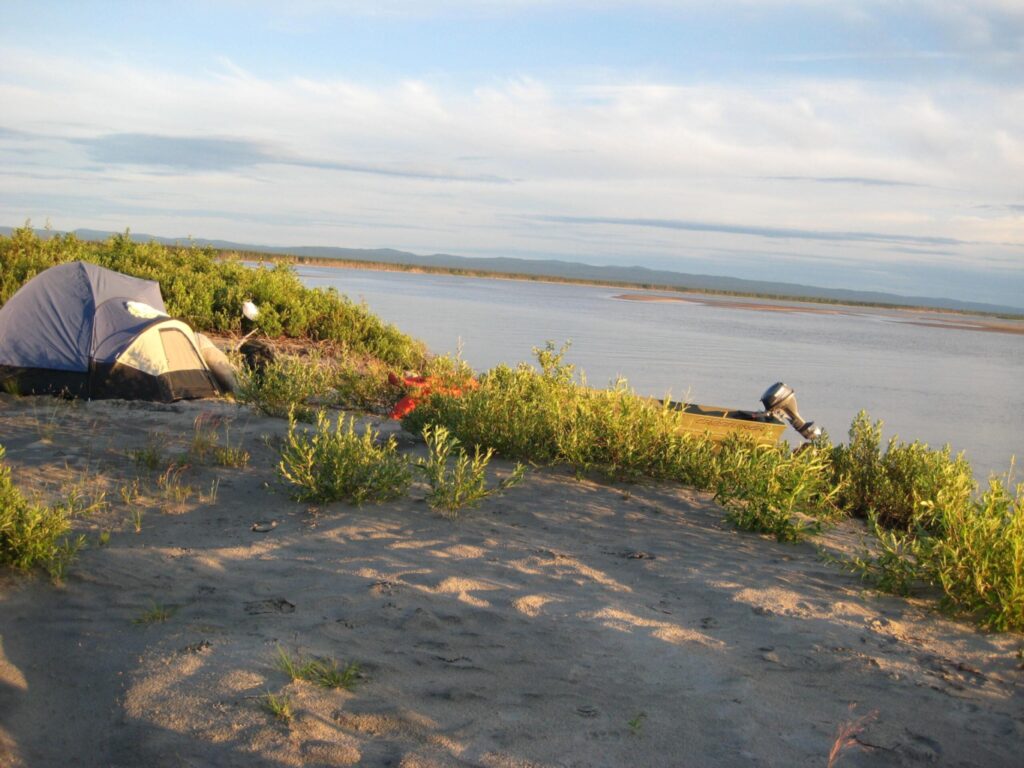The arctic climate is a complex system with multiple interactions with the global climate system. Grand RiverKeeper Labrador has been keenly following research in and about the Arctic for many years. We feel this research aligns with our purpose since we see climate change as another cumulative negative impact on the Grand River and its environs. Various reports have pointed out that the arctic climate is changing rapidly, thus leading us to this article.
The following article is available on the AMAP website, which is “ARCTIC MONITORING & ASSESSMENT PROGRAMME”. The primary function of AMAP is to advise the governments of the eight Arctic countries (Canada, Denmark/Greenland, Finland, Iceland, Norway, Russia, Sweden and the United States) on matters relating to threats to the Arctic region from pollution and associated issues. This article Arctic climate: Past and present. In: Arctic Climate Impact Assessment (Chapter 2) is authored by Mcbean, Gordon & Alekseev, Genrikh & Chen, Deliang & Førland, Eirik & Fyfe, J. & Groisman, Pavel & King, R. & Melling, R. & Vose, R. & Whitfield, Paul. (2005).
__________________________________________
Summary of Article
The Arctic is the northern polar component of the global climate system. The arctic climate is a complex system with multiple interactions with the global climate system. The phase of the Arctic Oscillation was at its most negative in the1960s, exhibited a general trend toward a more positive phase from about 1970 to the early 1990s, and has remained mostly positive since. Sea ice is a primary means by which the Arctic exerts leverage on global climate, and sea-ice extent has been decreasing. In terrestrial areas, temperature increases over the past 80 years have increased the frequency of mild winter days, causing changes in aquatic ecosystems; the timing of river-ice breakups; and the frequency and severity of extreme ice jams, floods, and low flows.
The arctic climate interacts with the climates of more southern latitudes through the atmosphere, oceans, and rivers. Because of these regionally diverse features, an exact geographic definition of the Arctic is not appropriate and this chapter focuses on the northernmost areas (usually north of 60º N), while acknowledging interactions with more southerly areas

Fig. 2.5. Surface currents in the Arctic Ocean (based on AMAP, 1998). This diagram indicates how occurrences in the artic regions affect the global climates. ( Shown in the article).
Changes in the Arctic are very likely to have significant impacts on the global climate system. For example, a reduction in snow-cover extent and a shrinking of the marine cryosphere would increase heating of the surface, which is very likely to accelerate warming of the Arctic and reduce the equator-to-pole temperature gradient.
Freshening of the Arctic Ocean by increased precipitation and runoff is likely to reduce the formation of cold deep water, thereby slowing the global thermohaline circulation. It is likely that a slowdown of the thermohaline circulation would lead to a more rapid rate of rise of global sea level, reduce upwelling of nutrients, and exert a chilling influence on the North Atlantic region as Gulf Stream heat transport is reduced. It would also decrease the rate at which CO2 is transported to the deep ocean. Finally, temperature increases over permafrost areas could possibly lead to the release of additional CH4 into the atmosphere; if seabed temperatures rise by a few degrees, hydrated CH4 trapped in solid form could also escape into the atmosphere.
Although it is possible to draw many conclusions about past arctic climate change, it is evident that further research is still needed. The complex processes of the atmosphere, sea-ice, ocean, and terrestrial systems should be further explored in order to improve projections of future climate and to assist in interpreting past climate. Reconstructions of the past have been limited by available information, both proxy and instrumental records. The Arctic is a region of large natural variability and regional differences and it is important that more uniform coverage be obtained to clarify past changes. In order for the quantitative detection of change to be more e specific in the future, it is essential that steps be taken now to fill in observational gaps across the Arctic, including the oceans, land, ice, and atmosphere.
____________________________________________
Click here for full article
Mega Dams create MEGA DAMAGE! Are you concerned about the Grand River and the impacts of hydro development? Follow our blog and stay tuned to the latest reports and studies on the subject! GrandRiverkeeper Labrador Inc. monitors what’s happening and will keep you posted on topics of interest.
Views: 8

